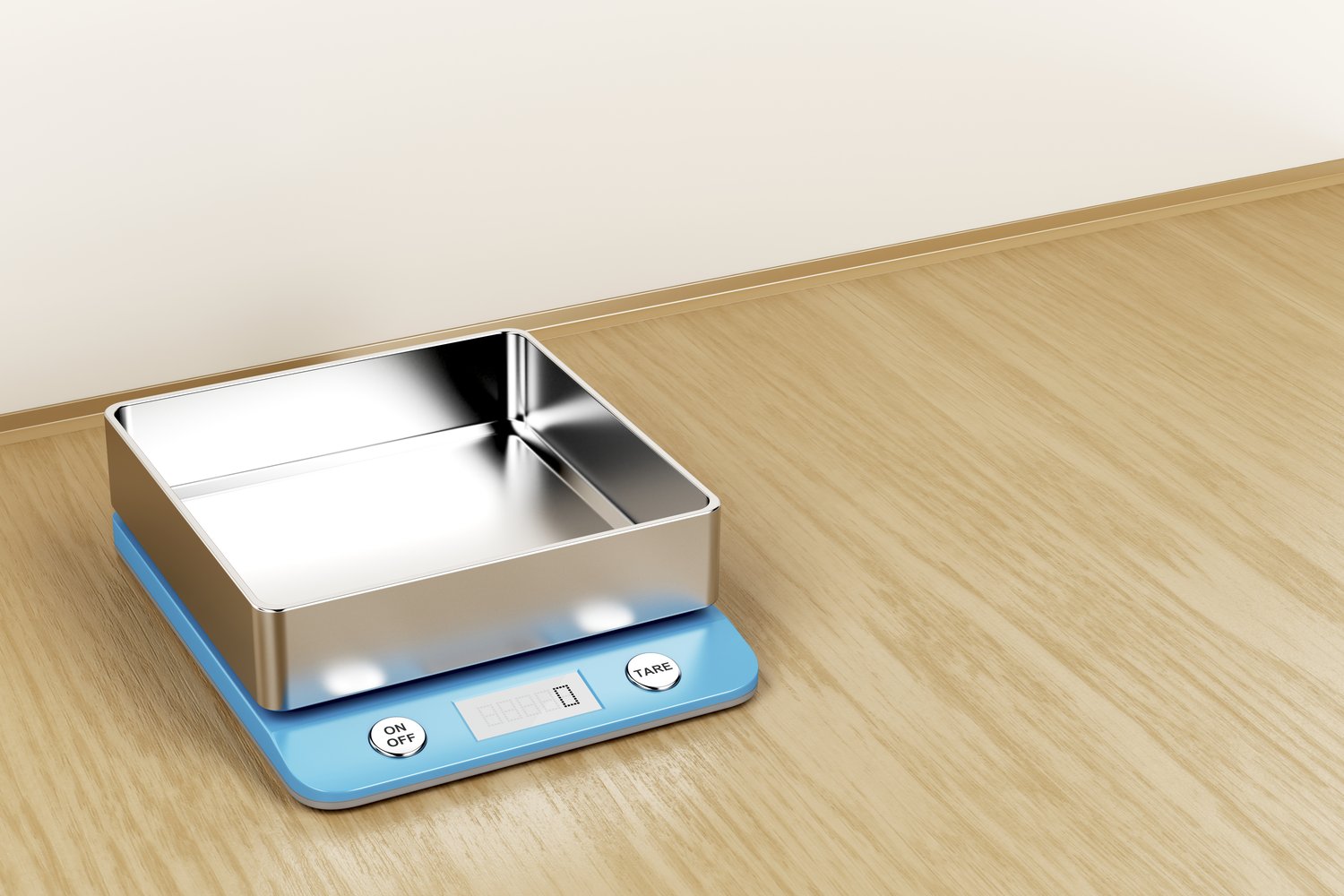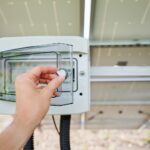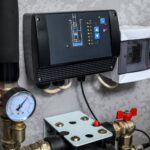Smart kitchen scales may transform your culinary adventures, but technical hiccups can create frustrating roadblocks. These high-tech gadgets often encounter issues with app connections and calibration. With our expert guide, we’ll help ensure your smart scale works flawlessly, enhancing both your cooking precision and experience.
- Explore common compatibility challenges between smart kitchen scales and smartphones to ensure seamless integration.
- Identify and diagnose issues with app syncing and calibration to maintain optimal scale performance.
- Learn effective calibration techniques to guarantee precise weight measurements.
- Discover practical solutions for quickly resolving connection issues and improving device functionality.
Dive into this comprehensive guide to understand how to troubleshoot and optimize your smart kitchen scale, creating a seamless cooking experience. Share your thoughts or tips to amplify your mastery of your kitchen tools.
Understanding Smart Kitchen Scale Connection Problems: App and Calibration Solutions
Smart kitchen scales, while incredibly convenient, can pose a variety of connection problems that hinder their effectiveness. These connection challenges often arise between the smart scale and its corresponding app, leading to user frustration. To unlock the full potential of these advanced kitchen gadgets, it’s crucial to address both compatibility issues and connectivity disruptions.
Whether you’re attempting to sync your smart kitchen scale with a smartphone app or striving for seamless data transfer, understanding these common problems is the first step. Incompatibility between devices and apps can throw a wrench in your meal preparation plans, impacting kitchen efficiency and precision.
By proactively identifying and addressing these issues, you can ensure that your smart kitchen scale operates smoothly, enhancing your culinary experience. Understanding how connection problems occur and learning how to rectify them not only saves time but also promotes a more satisfying usage of your kitchen technology.
Recognizing Compatibility Issues with Your Smart Kitchen Scale
Compatibility issues between smart kitchen scales and smartphones are a frequent hurdle for users. These problems often surface when software updates are released, or when devices come from different manufacturers. Before diving deep into troubleshooting, it’s essential to assess whether your smartphone supports the app and features required by your scale.
One of the most common compatibility concerns revolves around the operating system. Check if the smart scale’s app is compatible with your device’s OS version. Both iOS and Android have minimum version requirements that must be met for the app to run smoothly. Failure to comply with these requirements often results in malfunction or inability to connect.
Additionally, some smart kitchen scales are designed specifically for certain models or brands of smartphones. Ensure that your smartphone model and the smart scale are intended to work together. This information is typically available in the product description or the manufacturer’s website.
Taking these steps will not only help in preventing connectivity issues but also enhance the overall experience of using your smart kitchen scale, allowing the app integrations to work as intended. Ensuring compatibility is key to unlocking the detailed benefits of your smart kitchen technology.
Diagnosis of Connection Problems in Smart Kitchen Scales: App Syncing and Calibration Troubles
In the world of smart kitchen appliances, ensuring seamless connectivity between your kitchen scale and its dedicated app is crucial. Connection problems not only disrupt precise measurements but can also affect overall kitchen efficiency. One of the first steps in diagnosing these issues involves checking the Bluetooth and Wi-Fi settings on your smartphone. Ensure they are enabled and your device is set to discover other devices.
Common synchronization challenges may arise if the app is not updated to its latest version. Regular updates often include bug fixes and connectivity improvements. If you are experiencing app syncing troubles, check the app store for updates and install them promptly. For deeper diagnostics, consult the scale’s user manual, as it provides specific troubleshooting tips tailored for certain models.
Calibration errors can also influence connectivity and performance. When your scale consistently reports inaccurate weights, it may be time to assess its calibration settings. Incorrect calibration can lead to discrepancies in measurement accuracy, impacting your culinary outcomes. To tackle this, become familiar with both manual and app-guided calibration procedures provided by the manufacturer. Identifying and resolving these calibration issues can greatly enhance your smart kitchen scale’s efficiency.
Ensuring Proper Calibration for Accurate Measurements
Proper calibration is vital for a smart kitchen scale to deliver precise and consistent measurements. To achieve this, you can rely on two main methods: manual calibration and app-guided calibration.
Manual calibration usually involves using a known weight to verify the scale’s accuracy. Refer to your scale’s user manual for detailed instructions on manual calibration processes. Typically, this is performed by placing a calibrated weight, like a standard weight or household item of known mass, on the scale. Follow the steps meticulously to ensure that the scale reads accurately.
App-guided calibration, on the other hand, utilizes technology to streamline the process. Most modern smart kitchen scales are accompanied by an app with a built-in calibration feature. This function walks you through the calibration step by step, ensuring that the scale is perfectly aligned with the app’s standards for precision.
Regular calibration is recommended, especially after replacing batteries or moving the scale. This ensures that external factors like transport or changes in environment do not affect its performance. By ensuring correct calibration, you’ll enhance your cooking efficiency and enjoy a more reliable kitchen experience.
Practical Solutions for Quick Fixes to Common Connection Hiccups
Having trouble with your smart kitchen scale’s connectivity? These common connection hiccups can be frustrating, but there are practical and effective solutions you can try immediately. With the right approach, you can enhance the functionality of your smart kitchen scale without professional intervention.
First, always start by checking the Bluetooth or Wi-Fi connection on your smartphone or tablet. Ensure that the Bluetooth is enabled and within range of the scale. Similarly, if the scale uses Wi-Fi, verify that it is connected to a reliable network, preferably the one that your device uses. Double-check that your smart scale app has the necessary permissions to access these wireless features.
Regularly refreshing your equipment can help, too. Try turning your smartphone’s Bluetooth off and back on, or reset your Wi-Fi connectivity. Restart the smart kitchen scale, giving it a full power cycle by turning it off, waiting a few moments, and then turning it back on. This can resolve temporary software glitches.
Software updates are crucial in fixing bugs that may cause connectivity issues. Regular updates not only improve the performance of your device but often address known issues like unstable app performance. Check for both app updates from the app store and firmware updates for your scale itself.
Another essential step is to ensure your smart kitchen scale firmware is current. Using the management app, check for any available firmware updates and apply them as needed. This can resolve a myriad of connectivity and performance issues.
Additionally, take the time to reset the pairing between the scale and your device. Complete a ‘forget device’ option in your Bluetooth settings and reconnect as if new. This fresh start can often correct mismatches in the communication software.
Lastly, assess any environmental factors that might impede a strong connection. Make sure there are no strong electromagnetic fields nearby. Devices like microwaves or wireless routers can interfere with signals if placed too closely. Position the smart scale in an area with minimal interference for the most stable connection.
By following these practical solutions, you can mitigate most connection problems with your smart kitchen scale, ensuring accurate and reliable kitchen measurements every time. If you’ve tried these steps and still face issues, it might be time to contact customer support for specialized advice.
FAQ: Smart Kitchen Scale Connection Problems
Why won’t my smart kitchen scale connect to the app?
Ensure your smartphone is compatible with the scale’s app and check if Bluetooth or Wi-Fi is enabled.
What should I do if my scale isn’t recognized by the app?
Try restarting both the app and the scale, and ensure the app is updated to the latest version available.
How can I resolve intermittent connection issues?
Make sure there’s no interference from other devices, and reset the connection by turning Bluetooth or Wi-Fi off and on again.
What are the steps for proper calibration of my scale?
Follow the manufacturer’s guidelines for manual calibration or use app-based guidance for automated calibration.
How often should I calibrate my smart kitchen scale?
For best results, calibrate whenever the scale seems inaccurate or after moving it to a new location.





